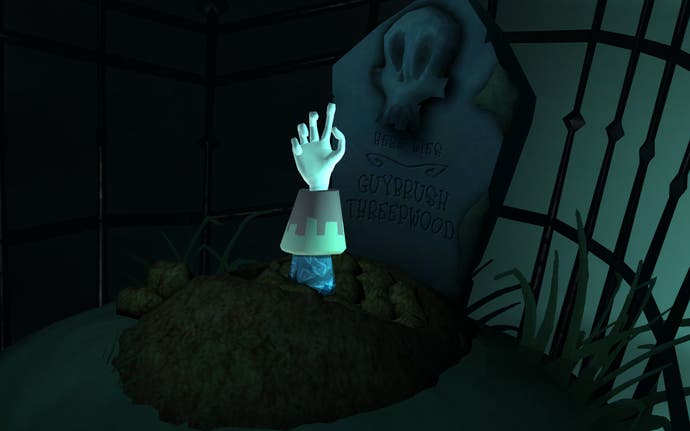Tales of Monkey Island: Season 1
Ape expectations.
When the credits roll on Chapter 5 of the newly revitalised Monkey Island, fans will probably breathe a sigh of relief. Though the road to get there has had a few ups and downs, Telltale has pulled it off. Fear not - I'm not going to spoil one precious pixel of how the story is wrapped up, but suffice to say that the ending feels earned, the characters feel like they've developed (at least as much as Monkey Island's wacky sensibilities will allow) and you, the player, should feel satisfied and invigorated by the season-long experience.
Much of this snuggly glow can be put down to the way this 21st-century continuation has tapped into the soul of a game with a distinctive personality, because Monkey Island fans have very specific ideas of what does and doesn't belong in the series. Escape from Monkey Island, released in 2000, is an above average-adventure game - albeit one with some extraneous additions, such as Monkey Kombat - yet fans often treat it as an awkward stepchild, tolerated but never embraced, purely because it just isn't Monkey Island. Tales of Monkey Island shares some of Escape's design foibles, most notably in its needlessly fiddly controls, but nails the personality, so the wobbles in pace and construction are easier to forgive.
Rewind back to the launch of the series, and it's easy to see why fans have been hesitant. Telltale's previous foray into the LucasArts back catalogue had brought us two seasons of Sam & Max, episodic adventures that had witty scripts but sparse gameplay spread too thinly. Telltale's other recent offerings were similarly afflicted. The scatty Strong Bad series on WiiWare and the Wallace & Gromit adventures, the latter episodes of which were rather unceremoniously dumped onto Xbox Live Arcade in one lump, were good but never great, hampered by repetitive locations and puzzle design that was never as inspired as you'd hope. Solid credentials for a company striving to make point-and-click a viable concern in 2009, but hardly up to the exacting standards required to take the helm of the Greatest Adventure Series Of All Time.

It's no surprise, then, that Launch of the Screaming Narwhal, the first of the new Monkey Island episodes, is timid in retrospect. Almost apologetic in its construction, it's more like a peace offering to fans than the start of a game in its own right. "It's okay," say the familiar narrative beats and comforting locations, "this is still the Monkey Island you remember!" The puzzles are decent, but the emphasis is more on the characters and story - in particular our hero Guybrush, whose portrayal anchors the whole enterprise. Explore a pirate town, earn yourself a ship - this is comfort food for the hardcore. With gamers reassured that due reverence was being paid to Ron Gilbert's masterpiece, Telltale was free to start reshaping the series to suit its vision.
Unfortunately, The Siege of Spinner Cay didn't quite deliver on that promise. Instead it showcased one of the problems inherent in episodic gaming: consistency. By dividing the story up into standalone chunks, what might have been a minor ripple in a single game can become a distracting dent. Like Telltale's other titles, Spinner Cay is far from being a bad game, but its reliance on the age old "find three objects" puzzle template makes it a poor second chapter, losing narrative momentum and calling to mind too many of the hereditary flaws of the point-and-click genre.
Shorter in length and narrower in scope than the opening chapter, it's the sort of lull that might have passed unnoticed in a single game, but its lack of ambition is amplified when isolated by the episodic construction. The supporting cast start to come into their own, though, which helps to strengthen the slightly weak structure. Morgan LeFlay, in particular, slots so neatly into the Monkey Island style that it's easy to imagine her in the original games.
Thankfully, the series hit its stride at the midpoint. Lair of the Leviathan represents Telltale's dedication to episodic adventure gaming finally reaching fruition. It's a cracking self-contained story, taking Guybrush inside a giant manatee, but it also propels the larger season arc forwards, moving Guybrush closer to his long-term goal while fleshing out new characters like Morgan LeFlay in enjoyable ways. A large part of this success is down to the way this chapter takes the series to a bizarre location unlike anything else previously visited. The Monkey Island feel is still there in the ludicrous situations and quickfire banter, but by removing it from the predictable milieu of tropical islands and rickety towns the formula feels fresh and alive again.








